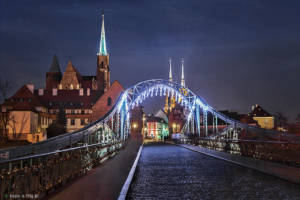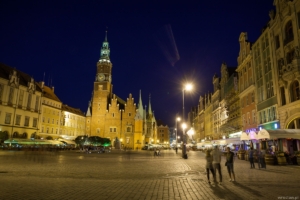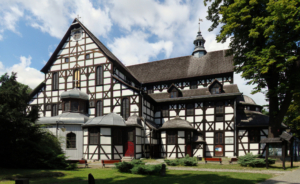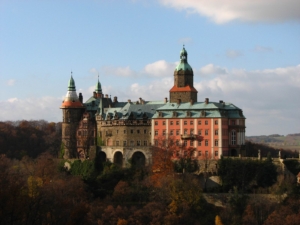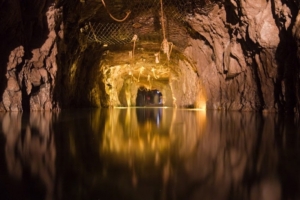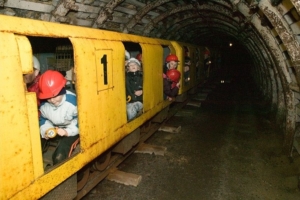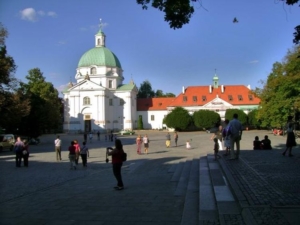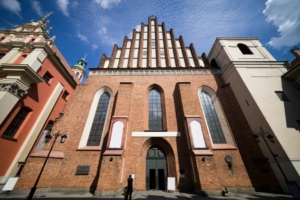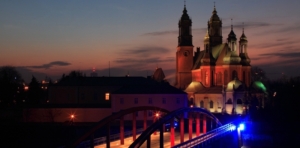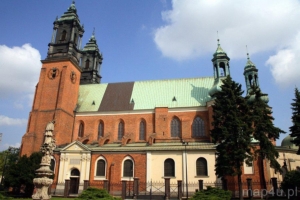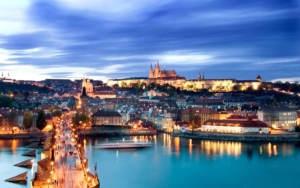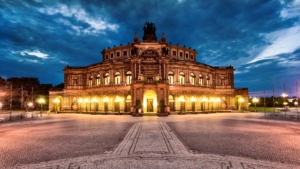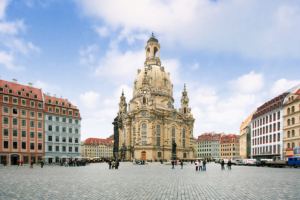We perfectly know how important that is to see the country’s natural and architectural treasures and get to know its history if one wants to understand its present and adapt to it. That is why we offer rich cultural and tourist options for the participants of our projects. Have a look at the overview below.
- Wroclaw
- Lower Silesia region
- Warsaw
- Poznan
- Cracow (optionally Auschwitz concentration camp and/or Wieliczka salt mine
- Prague
- Dresden
——————————————————————-
We usually start each project with a guided tour through the city of Wroclaw. The tour is divided into four blocks:
Part 1:
The islands (the oldest parts of Wroclaw):
The Cathedral Island:
– stroll through the Cathedral Island (on the way: St. Martin church, The Saint Cross church)
– visit to the catholic cathedral of St. John the Baptist (exterior and interior commentary by guide). Visit to the cathedral tower and panorama of the city from the best viewing point in town (possible if the tower is open – depends from time of the year).
Part 2:
Centennial Hall and its surroundings:
– visit to the interiors of the Centennial Hall (Hala Stulecia)
– the historic monument of Wroclaw recently inscribed on the prestigious UNESCO world heritage list
– commentary of the exterior by guide and watching a short movie about Centennial Hall
– stroll around the surrounding exhibition area (including the Japanese garden founded in 1913)
Part 3:
The University (historic monument constructed between 1702 and 1740):
– walk from the Cathedral Island through the Sand Island, past the trade market (Hala Targowa) with interesting modernism architecture (short visit and shopping possible)
– walk to the University main building. Commentary of the exteriors from in front of the main portal of the southern facade. Visit to the Cleopoldina hall, coratorium marianum, the tower terrace (if open).
Part 4:
The old meat market (Jatki) and the Town Square
– walk from the University to the old meat market and then to the main market square. A stroll around the market square and commentary of the most important sights. Finish in front of the old town hall (commentary of the exteriors).
duration: approx. 4 hours
The tour begins in front of the statue of pope John XXIII on the Cathedral Island.
On the way: focusing the attention on some practical aspects of moving around the city center (locating good bars, restaurants, pubs, post office, internet cafes etc., mobile cards sales points).
Picture gallery:
Our excursion through the castles and treasures of Lower Silesia region is the most popular choice of our guests. Hanging out for the whole day out of Wroclaw we visit Church of Peace Świdnica, Książ Castle and complex of tunnels Osówka Underground City and in expanded version additionally New Ore coal mine – sightseeing and journey by underground narrow gauge railway and Silver Mountain fortress – Prussian fortress of XVIII century – the biggest mountain fortress in Europe.
Picture gallery:
Warsaw trip: depending on the group size and budget, we get to Warsaw from Wroclaw by plane (1 hour), train (3.5 hours) or bus (5 hours). Our Warsaw city walk (an Introduction to Warsaw) provides a great way for you to discover more about Warsaw. Your private, local guide will help you to get a better understanding of Warsaw. We suggest an itinerary, but do not be afraid to discuss your preferences with your guide. Our guides are founts of peculiar information and stories, and do not give an express history lesson – unless that is what you want. We only use knowledgeable and flexible city guides.
Learn more about life during the Warsaw Uprising and under communism, about business centres and issues that absorb the attention of Warsaw’s citizens today. Listen to legends from the old times, learn about elections of Polish kings and the secrets of enclosed courtyards of Varsovian houses, uncover the former location of a mausoleum of a Russian tsar, learn what is original housing and what was rebuilt 70 years ago, and find where the Warsaw Pact was signed.
The sightseeing route usually leads through the Old Town, so painstakingly restored after being completely destroyed during WWII that in 1980 it was added to the UNESCO Heritage List. You will have the opportunity to see the Old Town Market Square, the New Town, the Barbican, St John’s Cathedral and the Royal Castle. You will not miss the Saxon Gardens with the Tomb of the Unknown Soldier and the imposing Palace of Culture and Science. You will see also the Great Theatre with its interesting Apollonian Quadriga in its tympanum, and stroll along the Royal Route to the Holy Cross Church containing the urn with Chopin’s heart.
Picture gallery:
It is a great idea to take a pleasant guided tout through Poznan, 180 km from Wroclaw, to learn more about this interesting and versatile city. Our guide will provide you with a deeper understanding of Poznan while walking around its Old Town.
Our tour starts on the island of Ostrow Tumski, the most important royal residence during the days when Poland was still a pagan country. This is where you will find Poland’s very first cathedral: St Peter and Paul’s (as Pope John Paul II used to say: “this is where Poland started”). From there we will take you to the charming Old Town of Poznan, where you will see the hallmark of the city, the “Poznanskie Koziolki”: two charming billy-goats that butt heads every day at noon. While in the Old Town you will have time to admire the Old Town Square with its Renaissance Town Hall. From there you will stroll through the narrow streets of this historical area until you reach St. Stanislav’s Church (also known as “fara”), a precious pearl of the Polish Baroque, brimming with gilded ornaments and mouldings.
Picture gallery:
Cracow’s center is very compact, the distances are relatively short, and the concentration of sights is enormous. We use some of the best guides in Krakow and thus we can guarantee you a very enjoyable time.
An experienced private guide will take you around the magical Old Town: up to the Castle and Cathedral on the Wawel hill. Sticking to the Royal Route, you go down Kanonicza and Grodzka Streets to see the ancient Jagiellonian university areas, and then a gentle walk leads you through the largest mediaeval square in Europe. While there, you can stop to visit the oldest shopping mall, the Sukiennice cloth hall, and then the Church of the Virgin Mary (including the magnificent Gothic wooden altar by Wit Stwosz). The tour finishes at the fortified city walls beside the Barbican Gate.
The programme can be modified at any time according to your wishes. If you want to include Kazimierz, then you can spend less time in the Old Town – feel free to tell your guide what you want to see.
As an option to the Cracow trip we propose a second day to be spent on tour to the largest Nazi death camp Auschwitz-Birkenau and the beautiful salt mine in Wieliczka.
Picture gallery:
If you are in Wroclaw, you are just few steps away from Prague – a capital of Czech Republic. We offer a lot of possibilities there, according to how much time you have. We drive you to beautiful city of Prague by a minibus or train.
Prague walking tours around the Old Town, Jewish Quarter and the New Town
The Prague Old Town area is a labyrinth of winding medieval streets lined with Gothic, Renaissance and Baroque buildings and churches. Let us guide you through this labyrinth and show you all the hidden gems. We’ll tell you the quarter’s amazing stories. Even if you are not used to doing a lot of walking, do not worry. Prague‘s historical center is very compact. Also, vehicles are not allowed in the most intriguing areas.
The Prague Old Town (Stare Mesto)
The Prague Old Town, founded in 1234, was the first of Prague’s original five towns. The Old Town’s ancient streets, most meandering around Old Town Square, are lined with many Gothic, Renaissance, Baroque and Classicist buildings, churches and theaters, forming a huge museum of architecture under the open sky. As the hour approaches, you will get to see a spectacle at the Astronomical Clock, one of Prague´s main attributes, taken straight from the Middle Ages. We will also visit the unique Jewish quarter – Josefov. The quarter kept its unique heritage during World War II. The oldest preserved synagogue in Europe is to be seen in Prague!
Jewish Quarter (Josefov)
When the Lesser Town’s Jewish section was destroyed in the 11th century, Jews took refuge in the area near the Old Town. Between the 14th and 18th centuries, they suffered through pogroms, a destructive fire and expulsion from Prague. But there were good times as well. From 1597 to 1609 Jehuda Loew ben Becalel, commonly called Rabbi Loew, was a much respected chief rabbi of Prague who even met with Emperor Rudolf II. Under Emperor Josef II Jews enjoyed some freedoms and even more after the 1848 revolution, when they received equal rights and were allowed to live where they chose. The plight of the Jews across the centuries becomes almost tangible, given that most of the area is made up of the Jewish Museum that includes four synagogues and a cemetery.
The New Town (Nove mesto)
The New Town was founded in 1348 by Charles IV just outside the city walls of the Old Town. When it was established, Prague became the third largest city in Europe, after Rome and Constantinople, which is now Istanbul. The New Town’s dominant landmark is Wenceslas Square – the most famous square in the whole country because all the decisive Czech revolutions of the 20th century took place right there. It is the best place in Prague to learn about the foundation of Czechoslovakia, the period of the second world war, the Communist regime, the Velvet Revolution and the Velvet Divorce (the split of Czechoslovakia).
Picture gallery:
Dresden, the 800-year-old capital of Saxony, is one amongst of Europe’s leading cultural capitals. Its treasures include an abundance of architectural monuments, top-class museums and world-renowned cultural institutions, and promise those who discover them a real treat and wealth of surprises.
A city tour to Dresden offers you the chance to explore its historic centre, featuring the Zwinger Palace, Theatre Square, Royal Palace and the Church of Our Lady.




